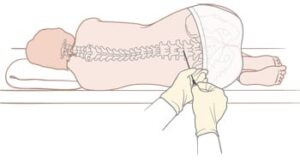
When you hear or make references to a “pain in the neck,” you likely aren’t very aware of the one disease that makes the reference no joking matter at all. For many, all they know about meningitis is it causes neck pain, it may involve a spinal tap and kids can die. The easy way to appreciate the danger of meningitis is to understand that it involves the brain. As such, depending on the severity of the disease, meningitis places everything that the brain does at risk,. Let’s approach this Straight, No Chaser with some basic questions and answers about meningitis.
What exactly is meningitis?
Specifically, meningitis is a disease caused by inflammation of the protective membranes (the meninges) that cover the brain and spinal cord. This inflammation is usually caused by an infection of the fluid surrounding these areas.
How does someone get meningitis?
Meningitis is usually caused by bacteria or viruses, but it can also be caused by other infections (e.g. fungal, parasites, tuberculosis, Lyme’s disease) or anything else able to inflame the meninges (e.g. injury, cancer or certain drugs). For practical purposes, your concern should be with avoiding infections that can cause it.
 What are the typical symptoms?
What are the typical symptoms?
If you can remember the classic triad of fever, headache and neck stiffness, that’s an excellent prompt to visit your local emergency room. There’s also often a pretty suggestive rash. There are many other symptoms that may or may not be present (e.g. nausea, vomiting, excessive sleepiness/fatigue, irritability, delirium, coma), but this speaks more to the difficulty in diagnosing meningitis and is not a list that should scare you into thinking every illness is meningitis. There are many other conditions and disease with some combinations of the above symptoms. Your task is to learn to engage the healthcare symptoms promptly instead of “waiting to see” if things get better. If and when meningitis is the disease, that strategy can have the worst of long-term consequences.
Who is most likely to get meningitis?
Anyone can get meningitis, but there are groups at higher risk, including the following:
- Children under age five are the most at risk group, especially those that haven’t received the vaccine for meningitis.
- Teenagers, young adults and others congregating in especially large groups (high schools, colleges) are also at higher risk.
- Adults over age 55 are also at higher risk.
Meningitis is most commonly spread by prolonged close contact and exposure to coughing, sneezing and intimate kissing in an infected individual.

What’s with the spinal tap?
Giving the consequences of undiagnosed meningitis, it is imperative to not only make a clinical diagnosis but a laboratory diagnosis as well. Important differences exist in the treatment of different causes of meningitis. A lumbar puncture (aka spinal tap) is a procedure in which a needle is placed between lumbar vertebrae (back bones) and inserted into the column that holds spinal fluid, which circulates between the brain, meninges and spinal cord). Some of the fluid is extracted, and based on chemical composition, organisms can be identified and other measures, a definite diagnosis can often be made. In experienced hands, it is a very safe procedure, although risks do exist. It’s certainly a more dramatic procedure that a traumatic one.
How is meningitis treated?
Depending on the cause, treatment measures include intravenous (IV) fluid support, steroids, antibiotics, oxygen, other supportive measures and treatment of complications. Successful treatment is enhanced with early diagnosis.

What’s the prognosis of meningitis?
Most cases of viral meningitis are benign and self-limited. Some patients will only need a few days of hospitalization, and others may need a prolonged stay in an intensive care unit (ICU). The majority of those infected with make a full recovery, although some may suffer from brain damage. This can include difficulties in learning, hearing, sight, concentration, memory, behavior and other symptoms. The keys for success include seeking care early and making sure your children have received the vaccine for meningitis.
Feel free to ask your SMA expert consultant any questions you may have on this topic.
Order your copy of Dr. Sterling’s new book Behind The Curtain: A Peek at Life from within the ER at jeffreysterlingbooks.com, iTunes, Amazon, Barnes and Nobles and wherever books are sold.
Thanks for liking and following Straight, No Chaser! This public service provides a sample of what http://www.SterlingMedicalAdvice.com (SMA) and 844-SMA-TALK offers. Please share our page with your friends on WordPress, like us on Facebook @ SterlingMedicalAdvice.com and follow us on Twitter at @asksterlingmd.
Copyright © 2017 · Sterling Initiatives, LLC · Powered by WordPress





 What are the typical symptoms?
What are the typical symptoms?


